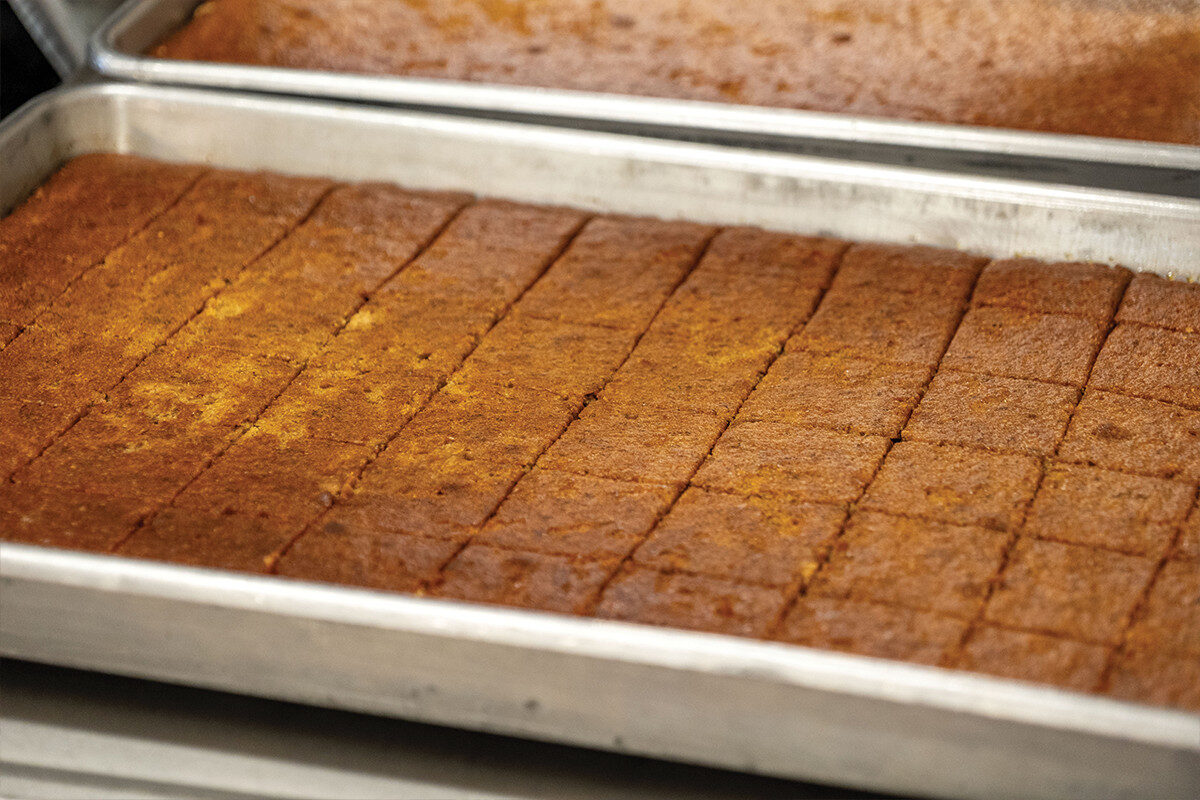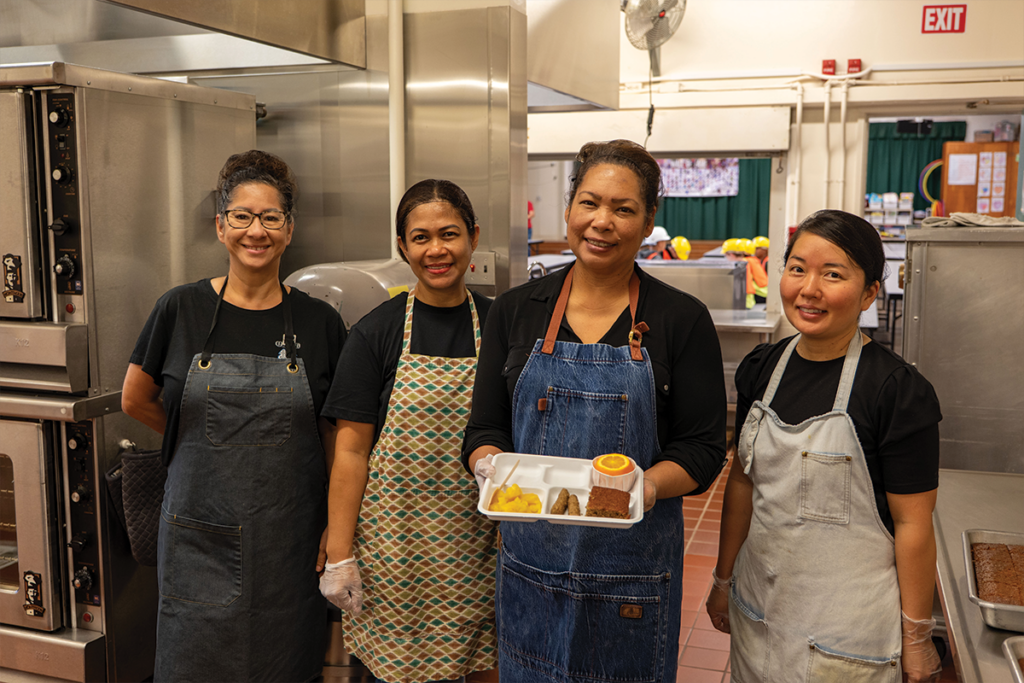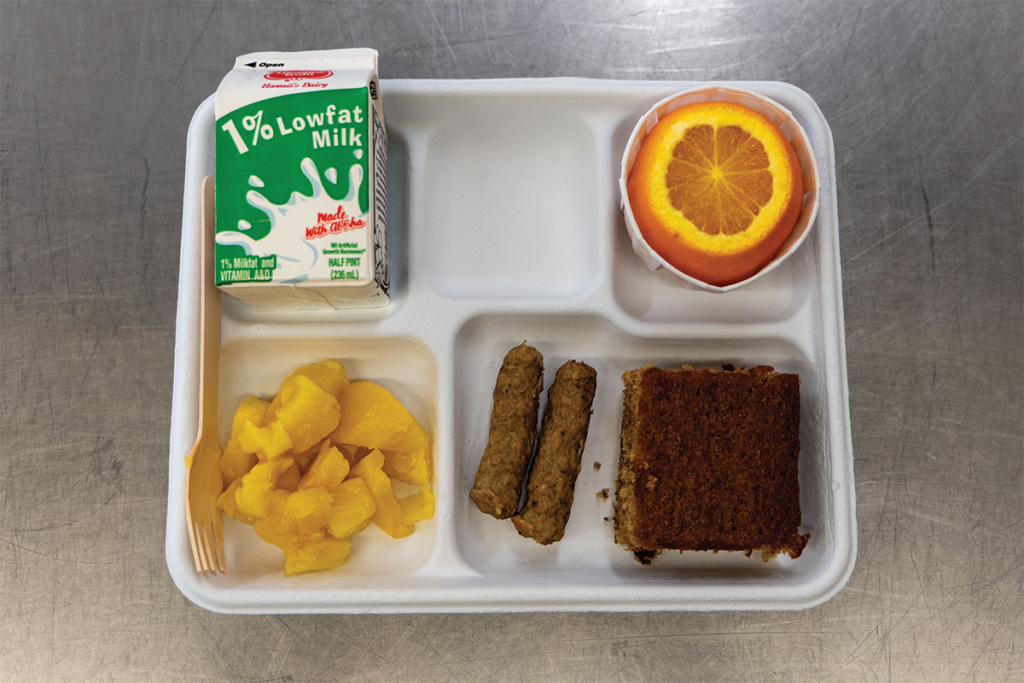HONOLULU — This April Hawaiʻi public school cafeterias statewide were offered the opportunity to serve ʻulu (breadfruit) banana bread for breakfast using local ʻulu flour, supplied by the Hawaiʻi ʻUlu Cooperative.
While ʻulu — in its fruit form — debuted in Hawaiʻi public school meals during the 2017-18 school year with a local-style kalua pork burrito and was then featured during the 2019-20 school year with ʻulu beef stew, this is the first time that ʻulu flour is being incorporated into school meals.
The ʻulu banana bread recipe was developed and finalized by Kaiser High School’s school food services manager, Christian Lee-Tomita, and baker, Edison Ching. An estimated 240 pounds of ʻulu flour grown by local Hawaiʻi farmers was distributed to 90 participating schools, serving over 11,000 students. Local bananas, as available, were also used in the recipe.
Helemano Elementary students and parents were eager to try the new recipe.
“There’s a lot of students that came [to breakfast] — first-timers — and a lot of parents that came too. They’re interested and curious about how it tastes,” Devie Nakamura, Helemano’s school food services manager said. “It’s a good recipe that we’re using and I’m so happy we get to support our local farmers.”
Fifth grader Dallas Agricula never had ʻulu before but was impressed with the new recipe. “It was the best banana bread I ever had in my life,” he said. “It’s chewy, it has a lot of flavor, and it tastes a lot like banana.”
His classmate, Thomas Simer, was familiar with ʻulu but never had it in banana bread. “It tasted like regular banana bread…it’s sweet,” he said.
Helemano Elementary parent Chantelle Evangelista agreed. “Honestly, I don’t even taste the difference in the banana bread — it’s pretty good!”
The fruit is naturally gluten-free, low fat, and contains all of the essential amino acids, fiber, vitamins A, B, and C, as well as phosphorus and iron. In addition to being dried and milled into flour — a potential substitute for all-purpose wheat flour — the versatile fruit can also be baked, boiled, roasted or fried to substitute potatoes, which are often imported to Hawai’i.
Substituting ingredients with ʻulu not only has health and economic benefits, but it also helps the local environment and community. ʻUlu is one of the only staple foods that grows on trees so additional planted trees help to boost reforestation efforts in Hawaiʻi. One tree produces about 450 pounds of fruit each growing season.
“There’s a ton of community benefits that come with ʻulu,” said Dana Shapiro, CEO of the Hawaiʻi ʻUlu Cooperative, which supplied the local ʻulu flour to schools. “It’s better for you, it’s better for the community and economy, and it’s better for our environment.”
The Department is in the process of determining how local ‘ulu flour can be incorporated as a regular ingredient for future school meals — a change that would help amplify the Department’s farm-to-school initiative to enhance local food sustainability, and align with 제175조학생들의 건강을 개선하고 지역 농부들을 지원하는 데 중점을 두고 있습니다.
“We would love to see ʻulu on the regular school breakfast and lunch menu all year-round,” Shapiro said. “I hope to see more innovative uses of ʻulu so that the kids can try it in new ways, learn, and get inspired for how they might cook with ʻulu, or create other products out of ʻulu in the future.”
하와이 공립학교는 주에서 가장 큰 식품 기관 소비자로, 하루에 10만 끼 이상의 학생 식사를 제공합니다. 이 부서는 주 전역의 지역 공급업체와 긴밀히 협력하여 앞으로 정기적으로 모든 학교에 신선한 지역 농산물을 어떻게 확대할 수 있는지 살펴보고 있습니다.








